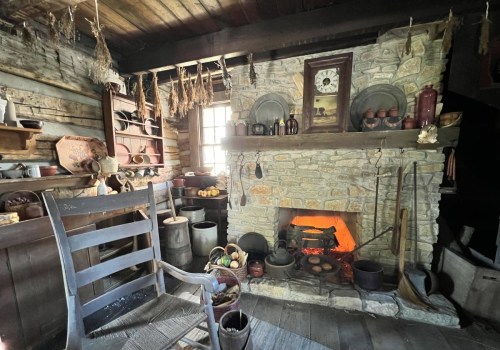As an expert on the history and culture of Wayne County, Michigan, I am constantly amazed by the rich and diverse heritage of this county. Located in the state of Michigan in the United States, Wayne County has a fascinating past that continues to shape its present and future. From its early beginnings as a trading post to its current status as a major economic hub, this county has a unique and vibrant history that is worth exploring.
The Early Years
The history of Wayne County dates back to the 17th century when French explorers first arrived in the area. The county was named after General Anthony Wayne, a Revolutionary War hero who played a significant role in the development of the Northwest Territory.In the early years, Wayne County was primarily inhabited by Native American tribes such as the Potawatomi, Huron, and Ottawa. One of the most significant industries during this time was fur trading. The abundance of fur-bearing animals in the area made it an ideal location for trading posts. French traders established the first trading post in 1701, which eventually grew into the city of Detroit. The fur trade brought wealth and prosperity to the region and played a crucial role in shaping its early economy.
The Industrial Revolution
In the 19th century, Wayne County experienced rapid growth and development due to the Industrial Revolution.The county's location on the Great Lakes made it an ideal transportation hub for goods and raw materials. This led to the establishment of numerous industries, including manufacturing, shipping, and agriculture. One of the most significant industries during this time was automotive manufacturing. In 1903, Henry Ford founded the Ford Motor Company in Detroit, which revolutionized the automotive industry and transformed Wayne County into a major industrial center. Other automobile companies soon followed, including General Motors and Chrysler, making Detroit the "Motor City" and the birthplace of the American automotive industry. The growth of the automotive industry also led to the development of other related industries, such as steel production, rubber manufacturing, and parts suppliers.
This created a ripple effect that boosted the county's economy and provided employment opportunities for thousands of people.
The Rise of Detroit
As the county's largest city, Detroit played a significant role in shaping its heritage. In addition to being the center of the automotive industry, Detroit was also a hub for music, art, and culture. The city's Motown sound and its contributions to jazz and blues music have made it a cultural icon and a source of pride for its residents. Detroit was also home to many influential figures who left their mark on the county's heritage. One such figure was Henry Ford, who not only revolutionized the automotive industry but also had a significant impact on the county's social and economic development.Other notable figures include Rosa Parks, who sparked the Civil Rights Movement with her refusal to give up her seat on a bus in Montgomery, Alabama, and Aretha Franklin, known as the "Queen of Soul" and one of the greatest singers of all time.
The Decline and Revitalization
In the late 20th century, Wayne County faced economic challenges due to the decline of the automotive industry. Many factories closed down, leading to job losses and a decline in population. This had a significant impact on the county's economy and its heritage. However, in recent years, Wayne County has experienced a revitalization thanks to efforts to diversify its economy. The county has attracted new industries such as healthcare, technology, and tourism.The city of Detroit has also undergone a transformation with new developments, including the revitalization of its downtown area and the construction of new sports stadiums. Despite the challenges it has faced, Wayne County's heritage remains strong and continues to evolve. The county's diverse population, rich history, and vibrant culture make it a unique and fascinating place to live and visit.
The Future of Wayne County
As Wayne County looks towards the future, it is essential to preserve its heritage while embracing new opportunities for growth and development. The county's historical sites, such as the Henry Ford Museum and Greenfield Village, serve as reminders of its past and attract tourists from around the world. Additionally, efforts are being made to revitalize historic neighborhoods and preserve important landmarks. The county is also investing in education and workforce development programs to prepare its residents for the jobs of the future.In Conclusion
The heritage of Wayne County, Michigan is a reflection of its diverse population and the industries that have shaped its history.From fur trading to automotive manufacturing, the county has a rich and fascinating past that continues to influence its present and future. As Wayne County moves forward, it is essential to remember and celebrate its heritage while embracing new opportunities for growth and development.









